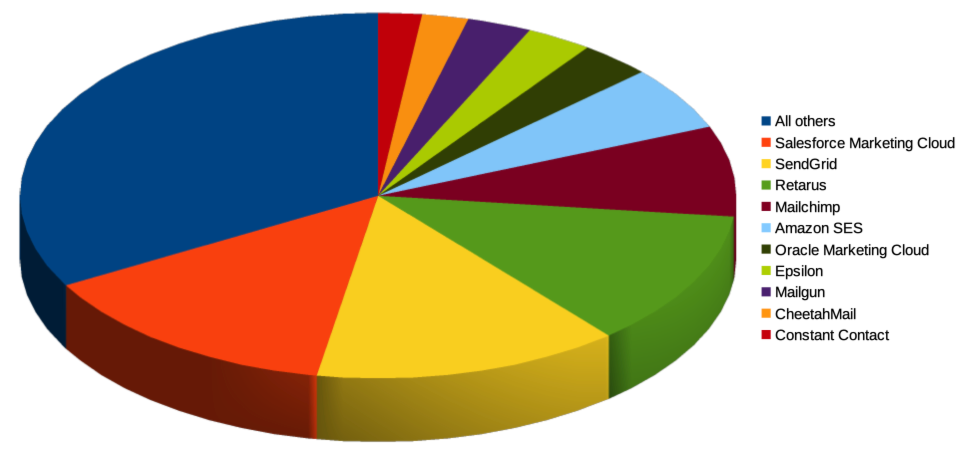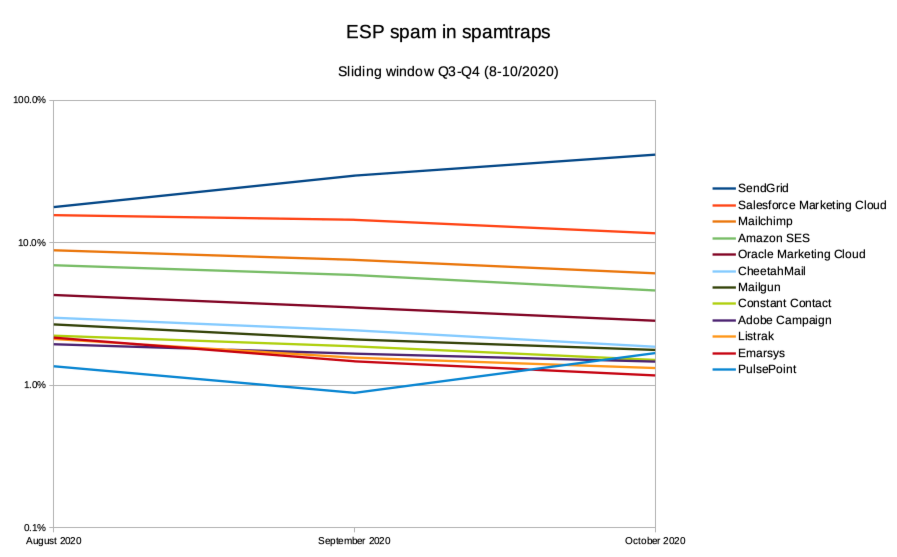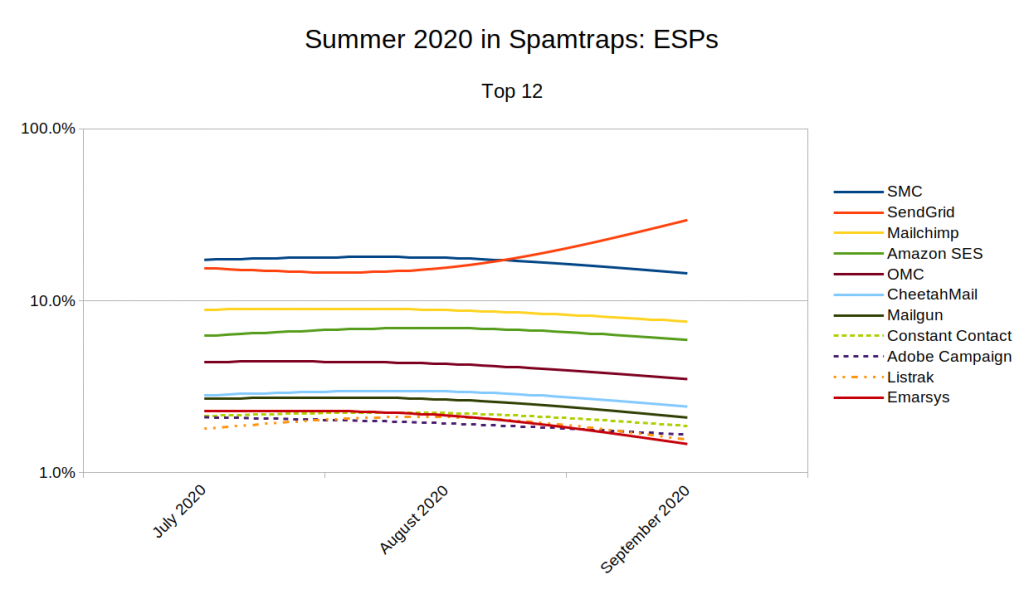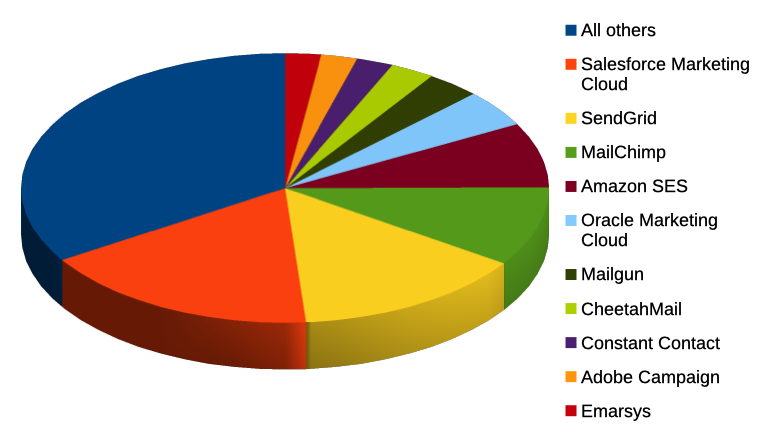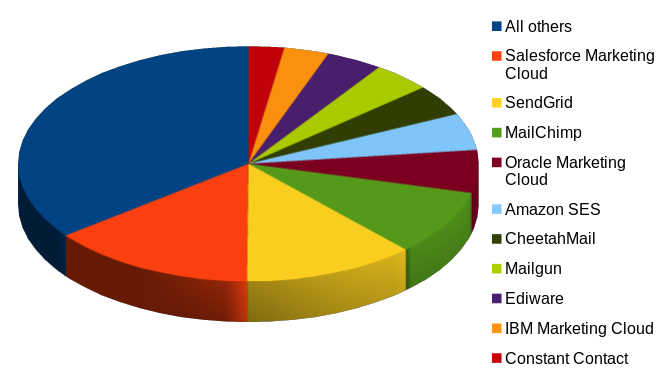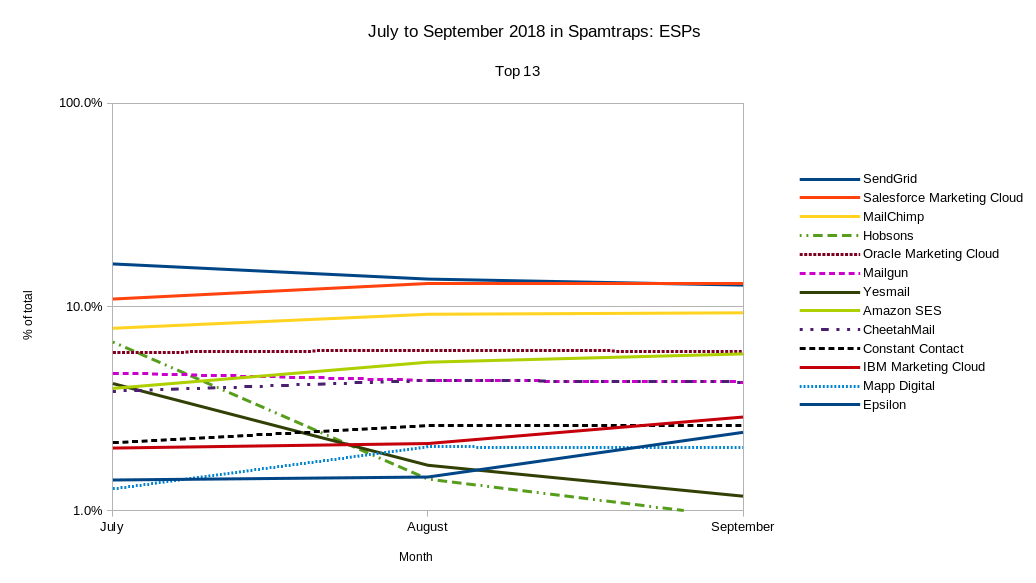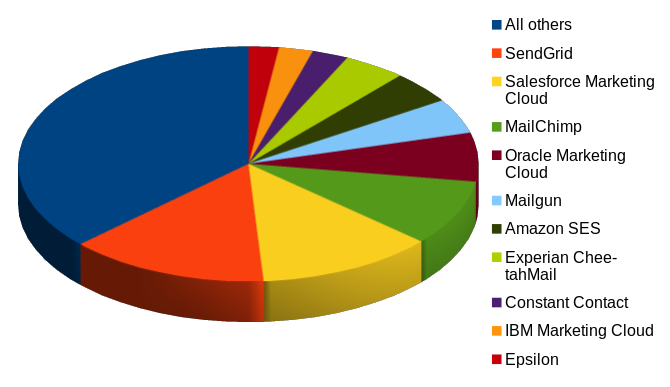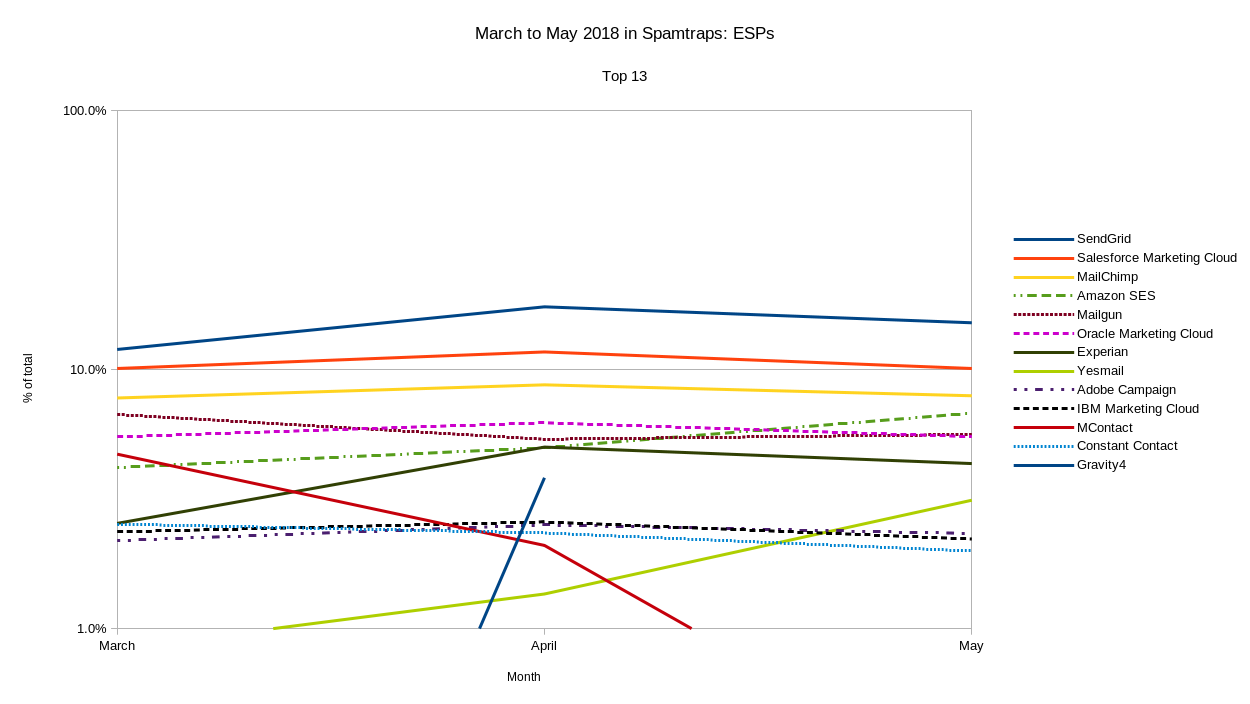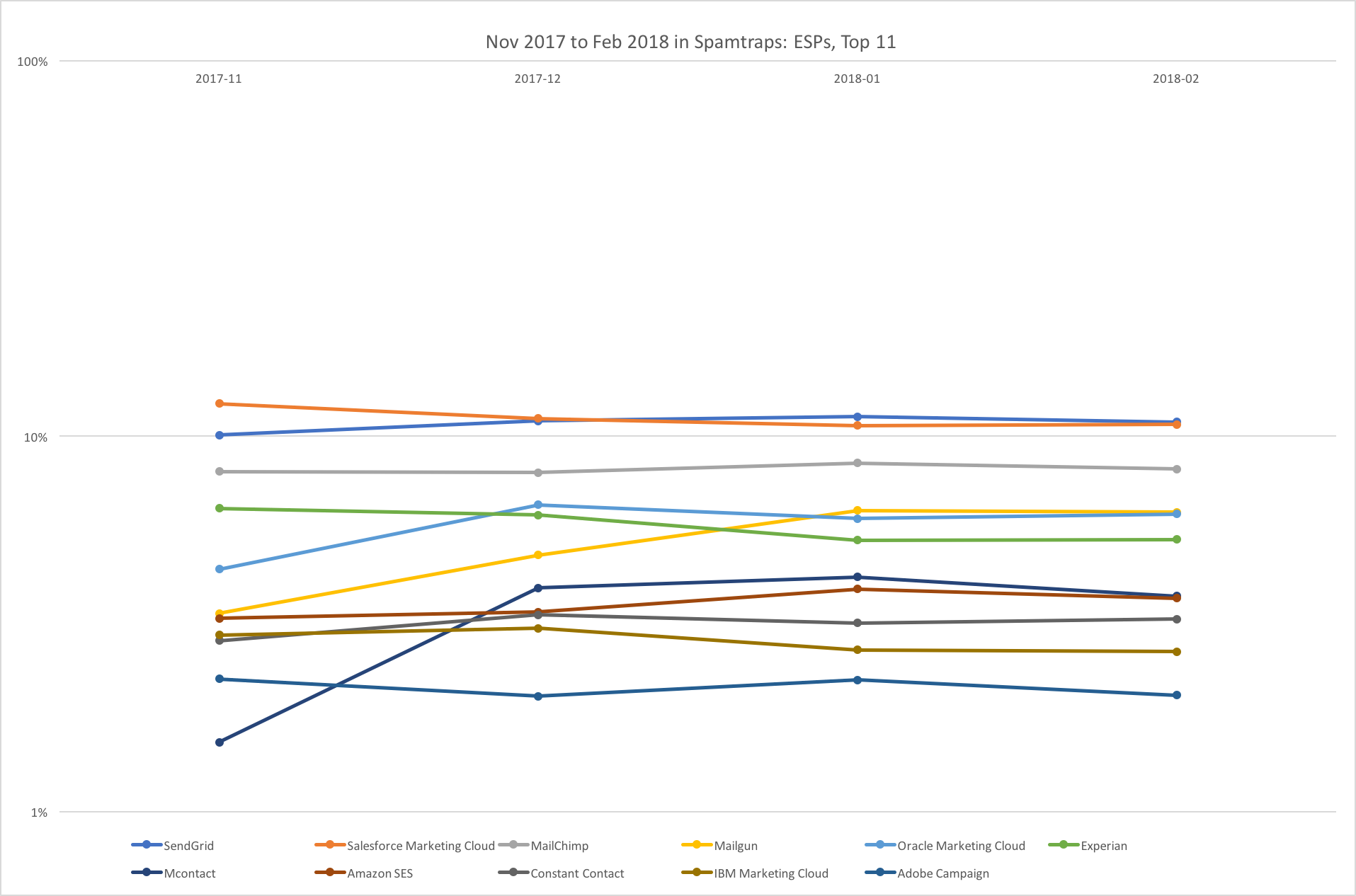February 2024 in Spamtraps: ESPs
So here, at long last, the monthly stats for ESPs in the Koli-Lõks OÜ spamtrap collection. The percentage of ESP spam out of all email received was 13.9%.
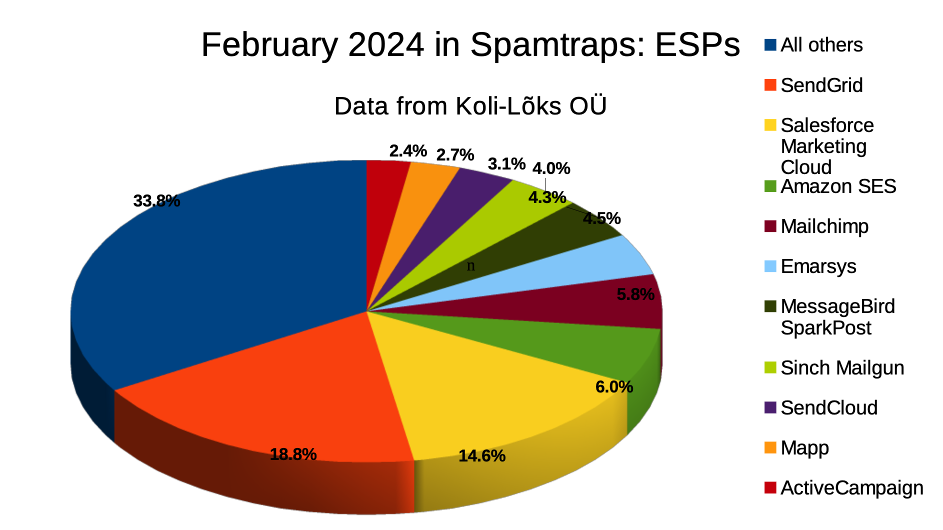
Or, to put the same in readable text,
| # | Name | Percentage | Most prominent customer | Notes |
|---|---|---|---|---|
| 0 | (All others) | 33.8% | ||
| 1 | SendGrid | 18.8% | infotimes.com.tw | |
| 2 | Salesforce Marketing Cloud | 14.6% | Sam’s Club | |
| 3 | Amazon SES | 6.0% | Terrie O’Connor Realtors | |
| 4 | Intuit Mailchimp | 5.8% | citistore.com.hk | |
| 5 | Emarsys | 4.5% | Costco Wholesale (UK) | |
| 6 | MessageBird SparkPost | 4.3% | Best Target Advertising Ltd (IE) | |
| 7 | Sinch Mailgun | 4.0% | Pandora | |
| 8 | SendCloud (uCloud) | 3.1% | f-avis.top | Newcomer in these postings |
| 9 | Mapp | 2.7% | nextwebbusinessguide.com | Includes eCircle and Blue Hornet |
| 10 | ActiveCampaign | 2.4% | wrenews.com |
The last time SendGrid was NOT number 1 in these stats was May 2021. Incidentally, that’s the previous time this blog was updated.
Amazon SES has more or less permanently taken over from Mailchimp as #3.
The entry of the Chinese ESP SendCloud / uCloud to these lists did in fact happen earlier, but it seems we’ve only tweeted about that at the time.
Here’s a list of the individual customers with the most volume from the whole bunch, their percentages out of the total ESP mail load, their respective ESPs, and their percentages out of their own ESP:
| # | Customer name | Pct out of total ESP mail | On which ESP | Pct out of own ESP | Name |
|---|---|---|---|---|---|
| 1 | infotimes.com.tw | 2% | SendGrid | 10.9% | 時報資訊股份有限公司 |
| 2 | viaggioas.com | 1% | SparkPost | 23.4% | Best Target Advertising Ltd, Ireland |
| 3 | nextdoor.com | 0.7% | SendGrid | 3.8% | Nextdoor |
| 4 | lager157.com | 0.7% | SendGrid | 3.7% | Lager 157 |
| 5 | tocr.com | 0.6% | Amazon SES | 10.3% | Terrie O’Connor Realtors |
| 6 | nrsc.org | 0.6% | SendGrid | 3.1% | National Republican Senatorial Committee |
| 7 | uber.com | 0.4% | SendGrid | 2.3% | Uber |
| 8 | samsclub.com | 0.3% | SFMC | 2.3% | Sam’s Club |
| 9 | costco.co.uk | 0.3% | Emarsys | 7.3% | Costco Wholesale (UK) |
| 10 | italotreno.it | 0.3% | Adobe Marketo | 14.2% | Italo, Italy’s high speed train |
You know where to reach us if you want to ask questions about this (that is, in case you don’t want it discussed in public in the comments to the blog). TTFN!
